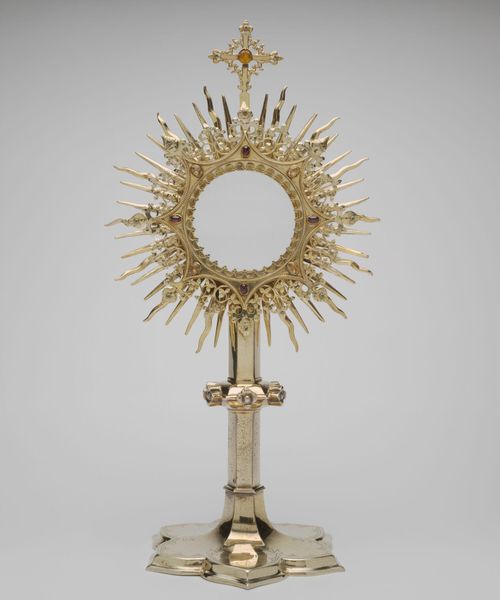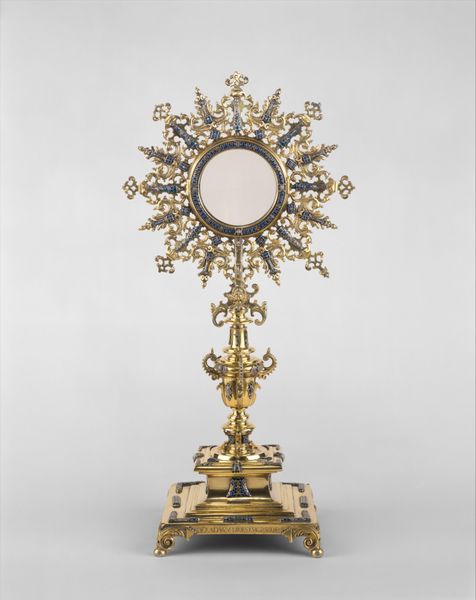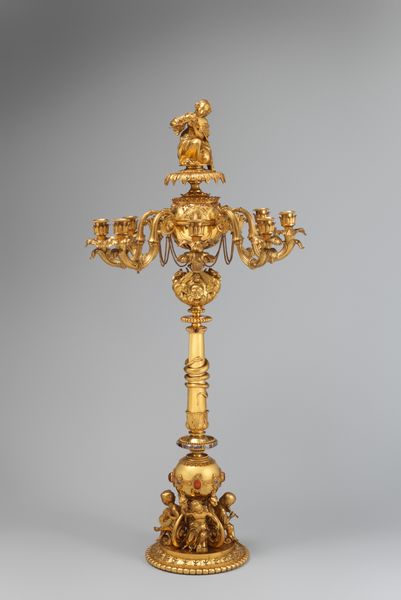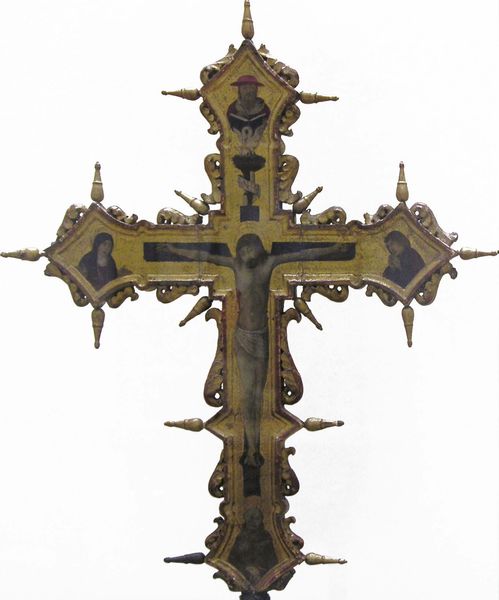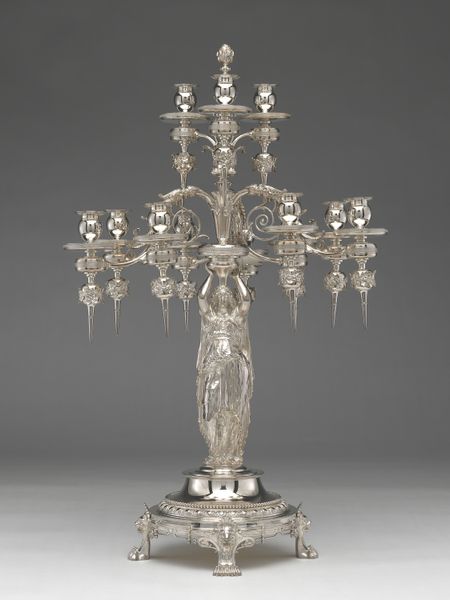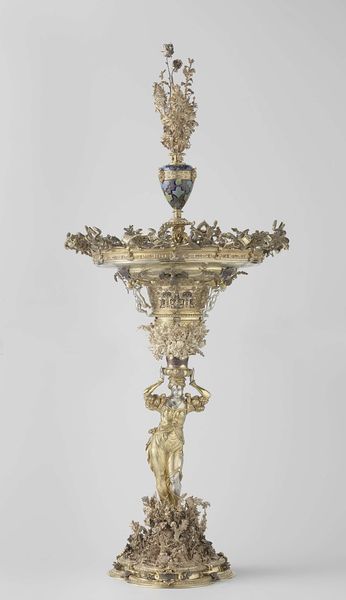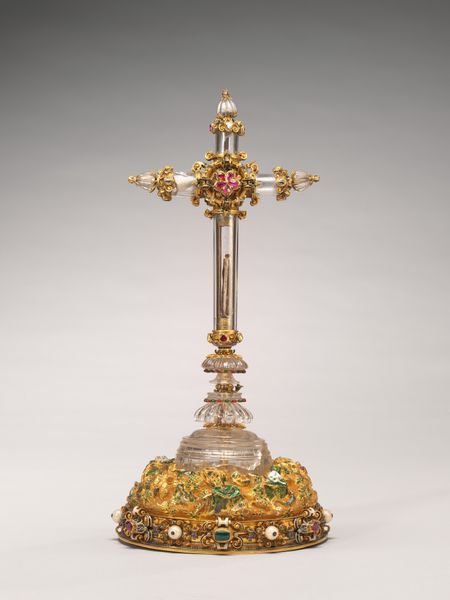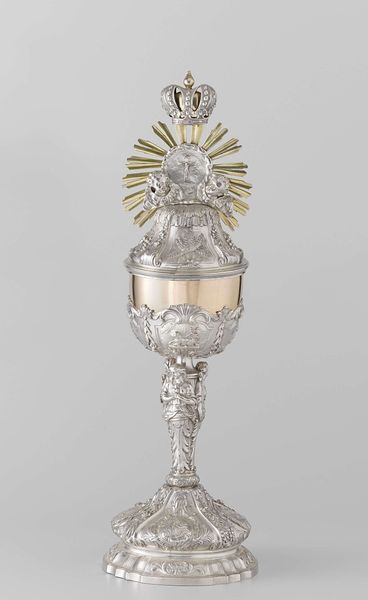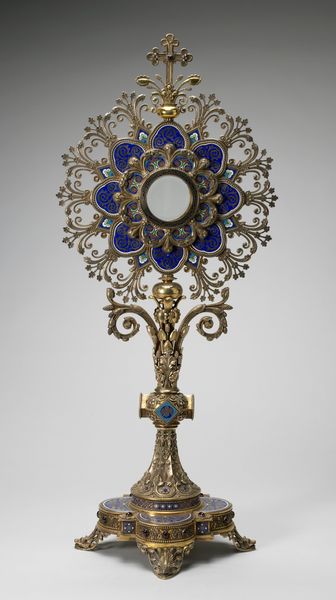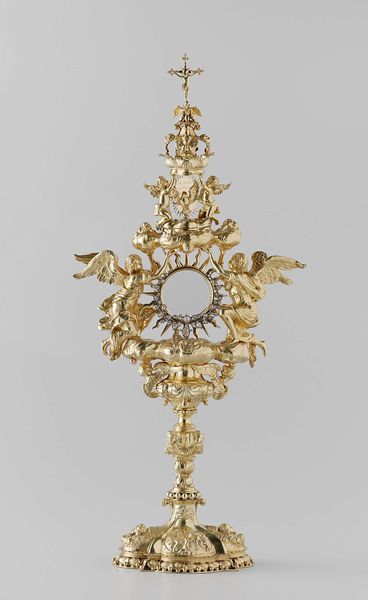
silver, metal, bronze, sculpture
#
silver
#
metal
#
sculpture
#
bronze
#
sculpture
#
decorative-art
Dimensions: 61.9 × 28.6 × 17.2 cm (24 3/8 × 11 1/4 × 6 3/4 in.)
Copyright: Public Domain
Curator: Standing before us is a remarkable Monstrance crafted in 1631 by Johannes de Nusco. Its diverse materials include silver, bronze, and other metals. It's quite the statement piece, isn't it? Editor: It certainly catches the eye. The first thing that strikes me is the contrast between the dark, almost somber angels and sunburst against the ornate, gilded base. There's a visual tension there, wouldn't you agree? Curator: Absolutely. Monstrances such as these held immense significance in religious life during the 17th century. This piece acted as a focal point for religious ritual, prominently displayed during processions and ceremonies. This particular example, now held in The Art Institute of Chicago, serves as a powerful connection to the artistic patronage of the Catholic church. Editor: Looking at it formally, that central circle, like a polished mirror within the sunburst, draws your gaze. The rays, sharp and defined, emanate outwards, framing the empty space so deliberately. There's an intriguing balance of void and form. Curator: The sunburst motif, of course, speaks to the divine and the Catholic church’s connection with powerful rulers of the time, doesn’t it? I think the angelic figures flanking the central figure reflect the social importance of hierarchy and celestial intermediaries to power, the whole assemblage presented an image of divinely sanctioned rule. Editor: Indeed, those figures contribute to the artwork’s vertical rhythm and structural balance. Also, those curvilinear forms that connect the base, angels, and radiating sunburst is wonderful! Yet, the somber tones contrast heavily with the gleam on the base. Is that tension intentionally unsettling? Curator: Consider the context. The era in which it was made, during The Thirty Years War, saw major social upheaval with Catholics on one side and Protestants on the other. So such a display, in which money and artistic innovation come together in a glorious sculpture to advance Catholic values and influence would represent more than just an aesthetic statement; it becomes an assertion of power and endurance for Catholic rulers in a fractious Europe. Editor: A compelling perspective. It’s fascinating how studying material details invites so many diverse, revealing interpretations! Curator: Precisely! Understanding the intersection of history, belief, and artistry gives one a much richer view into these amazing pieces.
Comments
No comments
Be the first to comment and join the conversation on the ultimate creative platform.
